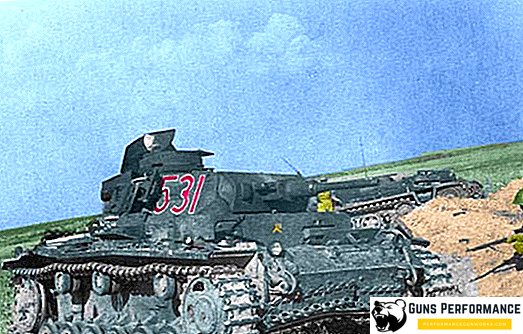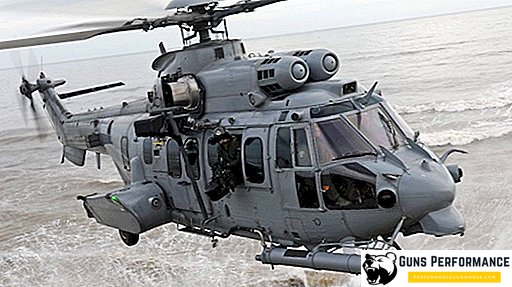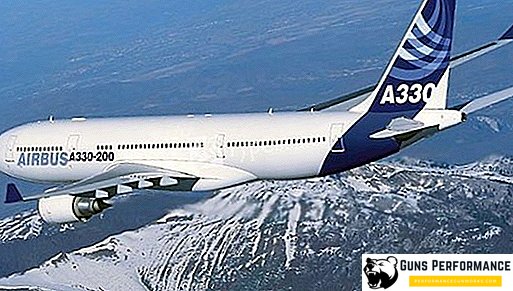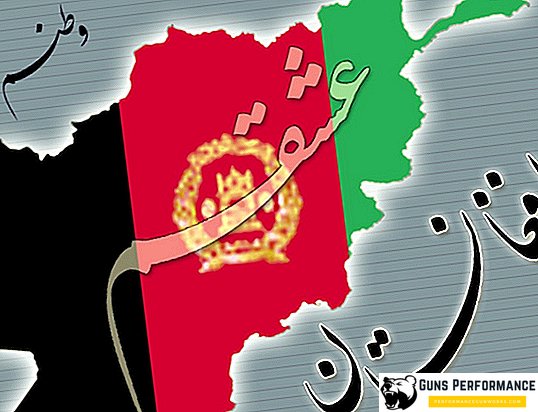"Rapidly moving German tanks could instantly crush the entire front line of defense, but interesting things began to happen on the battlefield. The first car literally stumbled out of the blue, jumping like a matchbox, and then froze. The sultan of flame appeared above the damaged car , a little later, along with the roar of the explosion, thick puffs of smoke appeared.After the head vehicle, the neighboring T-IV ran into a mine and started spinning. Within 5 minutes, 4 enemy steel machines were put out of action. silently observed the excellent results of the night work of the sappers. " The action of anti-tank minefields, often used on the battlefields of the Second World War, looks like this.

The picture, described in the novel “The Living and the Dead” by Simonov, vividly illustrates how skillfully and correctly the Soviet anti-tank mines turned out to be in place.
Anti-tank mines on the land front
The battles of the First World War on land clearly showed the need for engineering strengthening of the defending position. Included with the hundreds of kilometers of infantry trenches were thousands of kilometers of wire barriers. The defensive infantry burrowed deeper into the ground, the positions of the troops were strengthened in the most vulnerable areas by long-term firing points and other engineering structures. Overcoming such a defense was very difficult, especially for cavalry, which at that time was the only percussion instrument of the land army. The machine gun and the barbed wire became the main components of the defensive order of the opposing sides. Against the background of this picture, the appearance on the battlefield of armored mobile vehicles, which could breach defensive positions with a ram attack, looks quite natural.
On the Western Front, first the British and French, and a little later the Germans, began to successfully use tanks to break through the enemy defenses. A massive tank attack could overturn an entire front sector. The first armored leviathans were far from perfect, moved at snail's speed and did not have enough reservations. Despite this, the question of how and by what means you can stop enemy tanks arose in the warring armies. The idea to use mine weapons came in time. Thanks to the high-explosive charge, it was possible to block the directions of the most probable use of tanks. The idea came from the navy, where mine weapons proved in practice their effectiveness in the fight against a superior enemy.

The first land mines had a primitive design, which consisted of a set of TNT checkers. Such a mine looked more like an explosive device, remotely actuated by a person through an electric wire. Due to the fact that armor on the battlefield was used in a limited order, the first anti-tank mines were put in a single order. The industry has not yet mastered the production of these ammunition, because of the massive use of mine weapons on the fields of the First World War could not be considered. However, the lesson was not in vain. The rapid development of armored vehicles, which has changed in the form of this tactic of fighting, forced many armies of the world to adopt mine weapons.
Development of anti-tank mines in post-war Europe and the USSR
The end of the First World War marked the beginning of the total motorization of the army. In all the armies of the leading world powers, the armed forces began to receive more military equipment. The cavalry units were replaced by armored divisions and tank battalions. The infantry moved to armored personnel carriers and cars. Army became mobile. Artillery also moved to the tracked chassis. At headquarters, new concepts of warfare were born, where the main role was assigned to mobile mechanized units.
In parallel with the development of plans to conduct attacking and offensive actions, a defensive strategy was improved. France, which suffered the greatest casualties on the land front during the First World War, focused on creating a powerful, long-term defense, in which the mine weapons played a significant role. On the most dangerous direction, on the border with Germany, it was decided to build a long-term defense line. The Maginot Line, built in 1929-34. became a prime example of the defensive strategy of the time. Not lagged behind the French and other countries who tried to protect themselves from the rapid attack. Minefields were included in the defense system of the borders and stretched for many tens of kilometers. The main weapons of the mine arsenal were anti-tank and anti-personnel mines.

In the USSR, which by then had turned into a powerful industrial power, they were skeptical of mine weapons. The stake was made on the creation of powerful strike forces, which included cavalry and tank units. The defensive strategy at the time in the Soviet headquarters little thought. Anti-tank mines and anti-personnel mines were included only in the defense system of fortified areas created across the entire western border and in the Far East. As a means of passive anti-tank defense, anti-tank mines in the USSR began to appear only in the mid-1930s. The first mine specially created for such purposes is T-4. The ammunition consisted of a wooden or metal box that held up to 4 kg. explosives. Usually, powdered TNT was used as the primary explosive. The device worked when hitting the top of the charge, equipped with a pressure plate. It was possible to put it only in a dry ground. The bomb was a one-time action. It could not be neutralized or removed. This feature is inherent in all the first domestic anti-tank mines, which were produced in the prewar period.
The technical continuation was the appearance in 1935 of the first production sample. Anti-tank mine TM-35, released in 1935, became the main fire and striking means of the engineering troops of the Red Army. Unlike the previous model, the mine had a more perfect fuse, which worked with a pushing force of 100-160 kg. The anti-crawler landmine worked only when a vehicle of heavy weight hit it.
In the future, more advanced and powerful land mines come into service with the Red Army, which, in turn, are already divided into anti-crawlers and anti-tracks. The difference was that the first ones were triggered by a direct hit on the warhead, while the second ones had a pin fuse that put the mine into action when in contact with the vehicle body. The striking ability of anti-tank mines naturally differed. Anti-tugging warheads inflicted only local damage to the equipment, depriving it of mobility. The anti-bottom mines worked under the body of the vehicle, causing severe damage to the explosion over the entire surface of the bottom. As a result of such a mine, tanks, armored cars and other vehicles were completely disabled.

Following the TM-35, the engineering troops of the Red Army are receiving the anti-tank mine TM-39 and TMD-40. All of these samples had a powerful warhead, they were put into action with the help of a detonator fuse. A characteristic disadvantage of all mines before the war was their disposability. After being mounted on a platoon, the mines could neither be secured nor removed from the ground.
With these samples of mine weapons, the Red Army entered the Great Patriotic War. The lack of attention from the top military leadership of the country led to the fact that in the most difficult period, in the fall and winter of 1941, the Red Army was not ready for effective anti-tank defense. German tank columns rapidly broke through defensive orders in open areas, successfully breaking open the flanks of the defending Soviet units. The absence of anti-tank mines in the required quantity did not allow for the creation of a solid and stable defense in the most tank-dangerous areas.
Anti-tank mine TM and the Great Patriotic War
The active use of mine weapons in World War II began at the end of 1941, when the Red Army tried to create a powerful echelon defense around Moscow. Troops capable of completely covering all directions at that time were sorely lacking. There was no proper amount of anti-tank artillery. It was decided to strengthen the main directions of the main attack of the German troops in the Western Front and the flanks, which were held by the troops of the Kalinin and South-Western fronts. During the two weeks that preceded the start of the Typhoon operation, Soviet engineering units put up to 200 thousand mines in the fields near Moscow. Mostly used models TM35, TM39, TM41 and TMD40. In some areas, new NM-5 mines, designed for multiple use, were installed.

Soviet land mines, spread over vast areas, significantly limited the maneuver of the German tank assault forces, forcing them to break through defenses in narrow areas. However, the most massive TM41 anti-tank mines were used on the battlefields near Kursk, where the Soviet army managed to equip defense in depth against the German attack units. Most of the losses of German tanks and self-propelled guns involved in the battle on the north and south face of the Kursk Bulge were caused by the action of a mine weapon. The performance of the Soviet anti-tank mines, which were already produced in subsequent years, significantly increased not only the power of the charge, but also ensured the best performance. When the territory was liberated, mines that were laid in the initial period of the war had to be undermined by tank trawls. Later mine productions were neutralized by sappers in the mode of mine clearance. At the end of the war, the anti-tank mine TM-44, characterized by a large charge, became the main mine ammunition. This model can be installed even under water.

German mines on the Eastern Front began to appear on the battlefield, starting in 1942. The strategy of constant strikes was not designed to create a passive defense. The first minefields exposed by the Germans appeared in the defense lines of the 16th and 18th armies of the Wehrmacht near Leningrad and on the Rzhevsky ledge, where it was necessary to create a solid defense. The main ammunition in the German army were T.Mine35 and T.Mine42. By the principle of operation and performance characteristics they were identical to the late Soviet models of these weapons. German ammunition differed reliable design of the fuse, moreover, they were originally designed for subsequent demining.

The Germans, being innovators in military tactics, were able to take the initiative in a mine war. The mines had a mixed scheme, where anti-personnel mines were placed between the anti-tank mines. Unlike the secular minefields, which were passable for infantry, the German mine positions were a real surprise for the Soviet sappers.
The modern era of anti-tank mines
The anti-tank mine TM of later modifications remained in service with the Soviet Army after the war. Most of the munitions remaining in the warehouses after the war were transferred to a number of "fraternal countries as a defensive weapon. In the Soviet Army, until the mid-60s, anti-tank mines, created during World War II, were in service.

In 1962, a new model of anti-tank mine, type TM-62, was supplied to equip the engineering troops of the Soviet Army. The design and construction of this munition became the base for a whole family of mines, which became the main type of engineering defensive means in the Soviet Army, and after that in the armed forces of the Russian Federation. Anti-tank mine modification TM-62M is the base model and is a universal anti-tracked action ammunition. The main explosive is 7-8 kg of TNT, TGA or MS explosives. Mine can be installed in the ground, in snow cover and even in water. The duration of the ammunition is not limited. Even with the destruction of the metal hull, the mine retains its combat characteristics.












